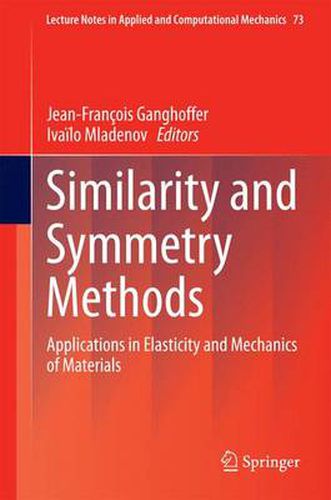Readings Newsletter
Become a Readings Member to make your shopping experience even easier.
Sign in or sign up for free!
You’re not far away from qualifying for FREE standard shipping within Australia
You’ve qualified for FREE standard shipping within Australia
The cart is loading…






This title is printed to order. This book may have been self-published. If so, we cannot guarantee the quality of the content. In the main most books will have gone through the editing process however some may not. We therefore suggest that you be aware of this before ordering this book. If in doubt check either the author or publisher’s details as we are unable to accept any returns unless they are faulty. Please contact us if you have any questions.
The principle aim of the book is to present a self-contained, modern account of similarity and symmetry methods, which are important mathematical tools for both physicists, engineers and applied mathematicians. The idea is to provide a balanced presentation of the mathematical techniques and applications of symmetry methods in mathematics, physics and engineering.
That is why it includes recent developments and many examples in finding systematically conservation laws, local and nonlocal symmetries for ordinary and partial differential equations.
The role of continuous symmetries in classical and quantum field theories is exposed at a technical level accessible even for non specialists. The importance of symmetries in continuum mechanics and mechanics of materials is highlighted through recent developments, such as the construction of constitutive models for various materials combining Lie symmetries with experimental data.
As a whole this book is a unique collection of contributions from experts in the field, including specialists in the mathematical treatment of symmetries, researchers using symmetries from a fundamental, applied or numerical viewpoint.
The book is a fascinating overview of symmetry methods aimed for graduate students in physics, mathematics and engineering, as well as researchers either willing to enter in the field or to capture recent developments and applications of symmetry methods in different scientific fields.
$9.00 standard shipping within Australia
FREE standard shipping within Australia for orders over $100.00
Express & International shipping calculated at checkout
This title is printed to order. This book may have been self-published. If so, we cannot guarantee the quality of the content. In the main most books will have gone through the editing process however some may not. We therefore suggest that you be aware of this before ordering this book. If in doubt check either the author or publisher’s details as we are unable to accept any returns unless they are faulty. Please contact us if you have any questions.
The principle aim of the book is to present a self-contained, modern account of similarity and symmetry methods, which are important mathematical tools for both physicists, engineers and applied mathematicians. The idea is to provide a balanced presentation of the mathematical techniques and applications of symmetry methods in mathematics, physics and engineering.
That is why it includes recent developments and many examples in finding systematically conservation laws, local and nonlocal symmetries for ordinary and partial differential equations.
The role of continuous symmetries in classical and quantum field theories is exposed at a technical level accessible even for non specialists. The importance of symmetries in continuum mechanics and mechanics of materials is highlighted through recent developments, such as the construction of constitutive models for various materials combining Lie symmetries with experimental data.
As a whole this book is a unique collection of contributions from experts in the field, including specialists in the mathematical treatment of symmetries, researchers using symmetries from a fundamental, applied or numerical viewpoint.
The book is a fascinating overview of symmetry methods aimed for graduate students in physics, mathematics and engineering, as well as researchers either willing to enter in the field or to capture recent developments and applications of symmetry methods in different scientific fields.